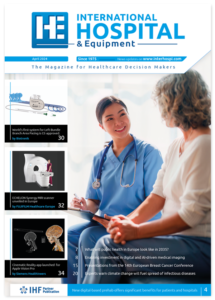Home-based telemental health delivers better quality of life for veterans
Home-based telemental health for depression is well received by patients and delivers as good a quality of life as in-person visits, according to the results of a clinical trial in 241 depressed elderly veterans reported by investigators at the Medical University of South Carolina and the Ralph H. Johnson VA Medical Center.
Depression affects 10 percent of Americans and is a leading cause of disability and mortality. And yet, only an estimated 56 percent of patients with depression seek treatment. Barriers to treatment include mobility issues, transportation costs, missed days of work, geographic isolation and fear of the associated stigma. By overcoming some of those barriers, proponents of telemental health say it could improve access to care for these patients.
Leonard E. Egede, M.D., director of the MUSC Center for Health Disparities Research and a Veterans Affairs physician, led a team of MUSC and VA Medical Center investigators, along with Christopher Frueh, Ph.D., director of clinical research at The Menninger Clinic and adjunct professor from Baylor College of Medicine.
‘This is the largest randomized clinical trial to date examining whether differences exist in patient perceptions, satisfaction, therapeutic alliance and quality of life between telemental health and same-room care,’ Egede said.
Male and female veterans aged 58 years and older who met the criteria for major depressive disorder, including Vietnam-era veterans, were eligible for enrollment in the trial. All participants received eight weeks of behavioural activation therapy and were randomly assigned to telemental health or in-person counselling. Behavioural activation reflects the notion that the patient’s activity plays a role in how the person feels and the goal of therapy is to reduce behaviours that promote depression.
Telemental health treatment sessions were delivered via in-home videoconferencing using a standard telephone line and did not require an internet connection. The 36-item Short Form Survey was used to assess quality of life and the Charleston Psychiatric Outpatient Satisfaction Scale was used to assess patient satisfaction. Scores on these scales did not differ significantly at 12-month follow-ups between veterans who received depression care via telemental heath and those who received in-person care.
Egede and colleagues had previously reported primary outcome and cost analysis results from this same trial of 241 depressed elderly veterans. In a 2015 Lancet Psychiatry article, Egede showed that telemental health was not inferior to same-room delivery in patients with a major depressive disorder for eliciting a treatment response. A treatment response was defined as a 50 percent decrease in depression symptoms at a 12-month follow-up appointment versus baseline and the absence of a diagnosis of major depressive disorder at a 12-month follow-up.
In an article published, Egede showed that the overall inpatient costs as well as outpatient and pharmacy costs for treating depression increase over time in elderly veterans, regardless of whether the treatment is delivered in person or via telemental health. This increase in cost is likely a result of the rising number of visits.
In conjunction with these earlier findings that primary outcomes and costs for telemental health are similar to those for in-person depression care, the report suggests that telemental health is a viable alternative to in-person visits because it delivers a similar quality of life and patient satisfaction.
EurekAlert www.eurekalert.org/pub_releases/2016-11/muos-ssh112316.php

